#lazarevicdynasty
Text
THE SINS OF DESPINA HATUN
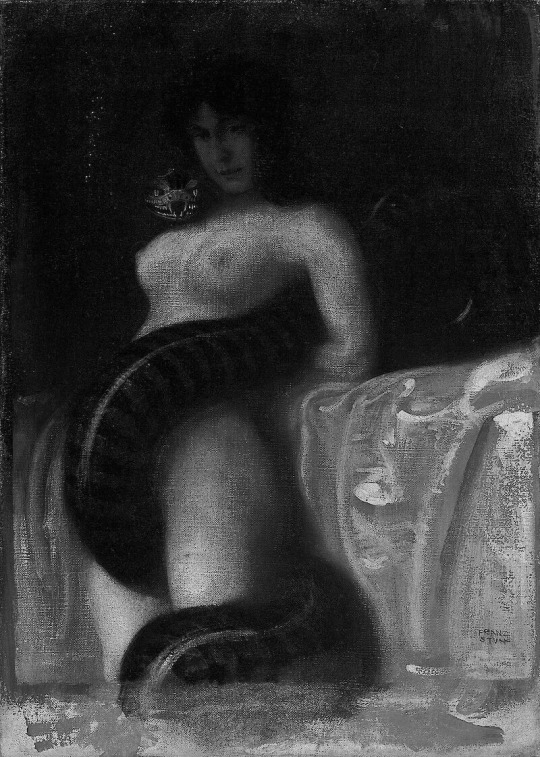
Since the 14th century, one woman has haunted the history of the Ottoman Empire and the very minds of their historians with her influence over a Sultan who suffered a hummiliating fate.
The only wife of a Sultan who has been the target of curses; Despina Hatun.
The reason for this great hatred of her has to do with the fact that she was influential and remain christian throughout her marriage. She was able to maitain the first and main place in the harem of her husband and to make him like her. A likeness that overtime grew into love and devotion.
Her wishes did not remain mere wishes, and for this reason the muslim associates of Sultan Yildirim Bayezid Han, as well as later Turksih historians resented her. Today most people remember her as “Bayezid’s great love”.
To Ottoman sources she was a fatal woman who lured their Sultan into sin. It can be concluded from that amount of hatred that she was allowed privileges and more power than was allowed for a foreign wife of a Sultan, or an imperial wife in general.
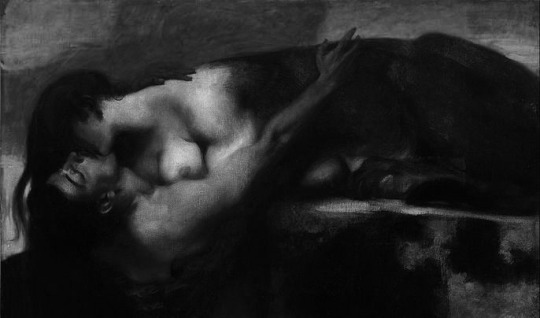
SHE MADE THE SULTAN FALL FOR HER
"As for Yıldırım, let's say that he fell in love with the princess." - Necdet Sakaoğlu. Bu Mülkün Kadın Sultanları, pg 83
"Throughout his life he was devoted to Despina, and his brother-in-law Stephen in turn was a devoted and steadfast friend." - Herbert Gibbons. The Foundation of the Ottoman Empire
According to Chalkokondyles, when Bayazit's favorite wife, Lazareva [daughter], whom he took everywhere with him into battle, was captured and handed over to Tamerlane, he ordered that wine be served to him there, in front of her husband. The enraged Bayazit told Tamerlane that what he was doing was not worthy of his father and mother. - Две српске султаније : Оливера Лазаревић (1373-1444), Мара Бранковић (1418-1487), pg 107
"When the latter's wife, the daughter of Lazar, whom he loved more than any of the others, had been taken away, and Timur was taking her around in the camp with him, he made her pour his wine in front of Bayezid, her husband." - Laonikos Chalkokondyles
"He kept her close – she accompanied him everywhere - he appeared unable to part from her. She was the one person, who influenced him most and was of course blamed by the Ottoman chroniclers for the fall of Beyazid’s empire into the hands of Timur. They considered the young sultan totally captivated by her."- Anna Buxton. The European Sultanas of the Ottoman Empire
It is widely understood that throughout their marriage Despina and Bayezid shared a devoted sentiment-perhaps more on his part-despite the circumstances that brought them together. The couple had similar interests such as politics, wine, partying, European customs, conversations and according to historians found constant erotic pleasure with each other. Though all of these cited interests might just be Ottoman historians attempts to depict this woman as deceitful.
" The sexually robust woman – she satisfies all his desires- but remains a Christian." - Richard Franz Kreutel performs a service to Ottoman polemic.
It is said that for some days, Bayezid remained in Despina's chamber and completely forgot about state affairs.
Olivera (Despina Hatun) is accused by Ottoman historians of using her charms and beauty to lure Bayezid to her. This seems highly untrue as Bayezid's harem is labeled as being filled with "forbidden beauties." He could have set his sight on another with more charm and beauty, and in fact he did, but still remained devoted to Despina.
It seems they use her beauty and political influence only as a means to label her as a Femme Fatale who is cunning, power-hungry and worst even, an infidel. Yet, when we look at foreign sources about the personality of Despina Hatun, she is describe as being gentle and flowery.

SHE WAS ALLOWED POLITICAL INFLUENCE
According to Dr. Zeljko Fajfric in his work "Srpske kraljice i princeze," released in 2007, no sultana before Olivera, who did not convert to Islam, managed to become so influential.
Yet something that is enough to critize him on is that he only puts this influence of hers to be due to her charms and beauty, yet again unintentionally labeling her as a femme fatale.
If beauty was all it took to have political influence, dozens more like her would have succeeded in that aspect, but she remains the only wife of Bayezid who had significant importance on politics.
Either Bayezid often sought after her opinion in matters of state or he took her as an advisor which might be the reason she was often with him, but no, a good scent, a soft spoken voice, long hair or enchanting glances will work, at least not for very long, even for a man prone to pleasure like Bayezi, and as we know Despina's political influence grew more with time than it decline.
A few things that are attributed to her council...
I: She helped accelerate the transfer of Prince Lazar's body back to Serbia.
II: She freed and paid ransoms for enslaved christians with the help of her brother; Stefan.

SHE BROUGHT DEBAUCHERY TO THE OTTOMAN COURT
Despina is often blamed for having introduced wine at the Ottoman court.
This sin that Bayezid's partook in can not be credited to Despina because he was already throwing such feasting assemblies ever since his princehood. Him and Despina married in 1390, he was well too familiar with wine and pleasure prior to their marriage.
Despina, later on, might have organized such festivities for him.
" Wine and kebab assembly was established. The infidel's daughter came and toasted Ali Pasha. The lady said, see the moment." - Aşıkpaşazade.
Still it is highly unlikely that Despina, who comes from a culture where married women do not speak in the presence of men would even partake in such assemblies filled with drunk men.
What is more likely is that she organized her own wine assemblies in the harem, with the presence of other women, but the chances of her doing such a thing as drinking in the presence of men is highly unlikely.
She might have even brought wine and so called debauchery to the once "pious" court of the harem, but as for the men; who take up the majority parties in politics and war, they were already familiar with the beverage.
#Bayezid#Sultan#Yildirim#Bayezid The Thunderbolt#SultanBayezid#Sultan Bayezid#Olivera Despina Hatun#Despina Hatun#DespinaHatun#Mileva Olivera Lazarević#medieval#middle ages#ottoman empire#Ottoman#Maria Hatun#lazarevicdynasty#Lazarevic Dynasty#Ottoman Dynasty#Maria Olivera Lazarevic#Domina Despina#yildirim bayezid#Ottoman Poetry#Ibn Kemal#15th century#16th century#Lazarevic dynasty#Serbia#Turkey#Osmanli#despinahatun
277 notes
·
View notes
Text
Sir Milos Obilic Fell For The Princess

Whether or not Sir Milos Obilic even existed is of no importance as a story started going around Serbia that Milos Obilic, a prodigy and loyal knight of Prince Lazar had fallen for the ethereal Olivera and went as far as asking for her hand in marriage.
It is of no surprise that Sir Milos Obilic; who was a respected knight at the time would often be a visitor at Lazar’s court, it is most likely during his frequent visits that he met and interacted with Princess Olivera. It is also probable that they also interacted during knight tournaments that Olivera and her mother often led.
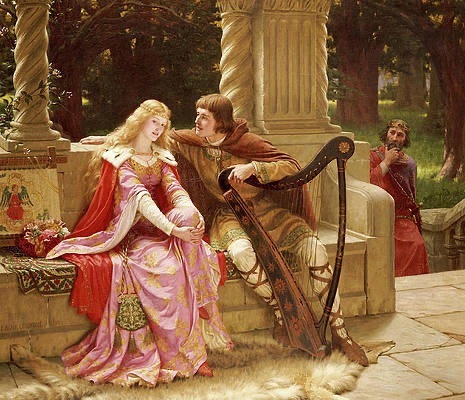
His infatuation with her led to a marriage proposal sent to Lazar from Sir Milos Obilic, but his proposal was rejected by Lazar with the excuse that she was too young and not yet mature to marry.
There is no clear evidence or any narration of Princess Olivera returning the same sentiment he had for her. She may never wish to marry him or had not yet found a desirable candidate in her sample of suitors and that might be why Lazar used the excuse of her age to peacefully reject the marriage proposal.

There are a few reasons why Lazar rejected Milos’s proposal one being that Princesses usually married out of their dynasty by birth to create new alliances and produce children of both dynasties. Lazar married all his other daughters outside of his realm for political games, the same would have happened with Olivera, and since Milos was already a knight of Lazar’s dynasty it wouldn’t be politically beneficial to marry his daughter to him.
Another reason is that though knights are noble and quite rich, they belong to the lower nobility and all of his other daughters married into influential families, sons of rulers or rulers themselves, Lazar was more likely planning on doing the same for Olivera and marrying her into a strong foreign political family.
#geology#mariaoliveralazarevic#Oliverahatun#DespinaHatun#Hatun#Sultana#Lazar#Knezlazar#LazarevicDynasty#medievalserbia#PrincessMilica#MilicaNemanjic#MilicaHrebeljanovic#Moravianserbia#knights#knighttournaments#oliverdespina#childhood#princess#Despina Hatun#Olivera Despina#Olivera Hatun
11 notes
·
View notes
Text
A DIVINE BEAUTY IN EDIRNE

"Laz Bey had a fortunate daughter whose beauty was like that of an immaculate houri of paradise, flawless and noble, free in her beauty like a tall cypress tree, distinguished among beauties as a fairy born." - Kemalpaşazâde.
With this poem of his time, Kemalpaşazâde draws attention and describe the beauty of Despina Hatun as divine-like grace to the world.
" Distinguished among beauties as fairy born." In this last part of the poem elevate the physical attributes of Despina Hatun as being unattainable even to those who are considered beautiful.
#Bayezid#Sultan#Yildirim#Bayezid The Thunderbolt#SultanBayezid#Sultan Bayezid#Olivera Despina Hatun#mariaoliveralazarevic#Despina Hatun#DespinaHatun#Mileva Olivera Lazarević#medieval#middle ages#ottoman empire#Ottoman#Maria Hatun#stained glass#lazarevicdynasty#Lazarevic Dynasty#Ottoman Dynasty#Maria Olivera Lazarevic#Domina Despina#yildirim bayezid#poetry#Ottoman Poetry#Ibn Kemal#Şemseddin Ahmed#Kemalpaşazâde#15th century#16th century
3 notes
·
View notes
Text
DESPINA HATUN IN FICTION II
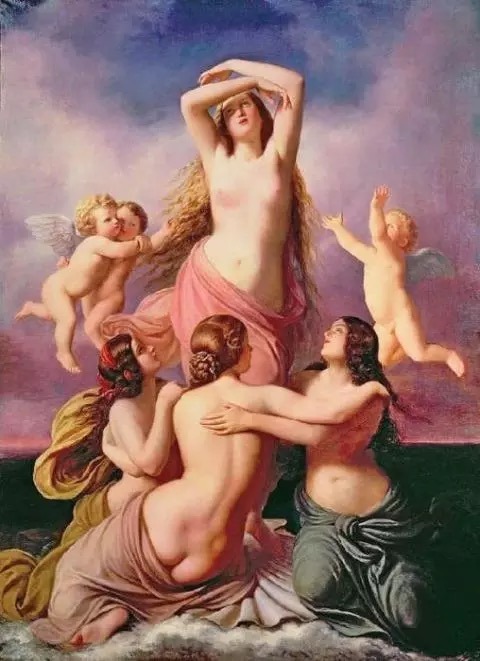
“Olivera; this blonde beauty of the Slavic race had a body as beautiful as Venus and coquetry as a Cleopatra (…) She was a woman with blond hair, blue eyes, a slim waist, and a nice figure. With this beauty of hers, she could have captured anyone she encountered. "Here was a great ruler who dominated the world, this woman's slave, the toy of her desires." Enver Benhan Sapolyo describes Bayezid's love for Olivera with these sentences. ---> Osmanlı Sarayı’nda Bir Sırp Prenses: Mileva Olivera Lazarevic by Mustafa Caghan Keskin.

The novel that was release to the public in 1944 follows the usual hatred and scapegoating by Ottoman/Turkish historians to Despina Hatun. As always it starts with compliments towards her beauty and charms and ends with distain towards her person.
By comparing her to Cleopatra, Şapolyo draws attention to the false idea that like Cleopatra, Olivera used her beauty and flirtations to make a devoted slave out of Bayezid/Yildirim.
Cleopatra wasn't a seductress and neither was Despina Hatun. Both women were highly educated and had leading personalities that played in their favor during their times.
Cleopatra wasn't as beautiful as many believe, she was a scholar, a woman with a wise tongue, that's how she attracted. And though by the statements of many Turkish sources who often describe the beauty of Despina Hatun as ethereal. I do not believe that in a harem full of beautiful concubines, beauty is what kept Despina Hatun in high status in the eyes of Sultan Bayezid, even if she was the most beautiful and alluring during Bayezid's reign.
It ( her beauty ) might have attracted him to her, but beauty does only that. It attracts, it does not keep and maintain one's devotion to another, especially for 12 years.
------------------------------------------------------------------------------
Arriving at the end of the novel he ( Şapolyo ) finish his novel by making Despina Hatun turn into a seductress no longer interested in Bayezid. no no no, his version of Despina Hatun has her eyes set on a bigger target; Timur. Yes, the same man who could have possibly made her serve him half naked at a banquet during her captivity.
The heartbroken Bayezid spits in the direction of Despina's face (as one does) then calls her a b!tch (because why not just add that in) and then take his own life by drinking poison.
This novel like many Turkish beliefs about Despina Hatun scapegoat her for Bayezid's own demise. It ignores the trauma she suffered by not only her own humiliation but also her husband.
Overall the whole novel is yet again a scapegoat projects of Turkish writers. I woudn't read it, neither will I even think of spending money on it.
I'll give it a 1.5/10. 1 for decent scapegoating. 0.5 for imagination and creativity, it would have been a whole 1, but the plot has been done before.
#geology#mariaoliveralazarevic#Oliverahatun#DespinaHatun#Princessmariaoliveralazarevic#Mariahatun#Hatun#Sultana#LazarevicDynasty#medievalserbia#royalife#Moravianserbia#oliverdespina#Milevaolivera#princess#Despina Hatun#Olivera Despina#Olivera Hatun#BayezidI#Bayezid I#sultan bayezid#Bayezid The Thunderbolt#Bayezidthethunderbolt#Yildirim Bayezid#YildirimBayezid#Yıldırım Beyazıt#YıldırımBeyazıt#Enver Behnan Şapolyo#EnverBehnanŞapolyo#novel
2 notes
·
View notes
Text
CHILDREN OF DESPINA HATUN

………. Hatun ( unknown name ) - Married Damad Ebu Bekir Mirza, son of Miranshah Mirza during or after Bayezid's captivity.
Pasa Melek Hatun - Married Damad Emir Celaluddin Islam son of Emir Şemseddin Mehmed; one of Timur's generals during or after Bayezid's captivity.
Oruz Hatun - Married an unknown man.
Oruz had a daughter named Ayse Hatun.
#geology#mariaoliveralazarevic#Oliverahatun#DespinaHatun#Princessmariaoliveralazarevic#Mariahatun#Hatun#Sultana#LazarevicDynasty#medievalserbia#royalife#oliverdespina#Milevaolivera#princess#Despina Hatun#Olivera Despina#Olivera Hatun#Oruz hatun#Oruzhatun#Pasamelekhatun#Pasa Melek Hatun#Bayezid I#Bayezid The Thunderbolt#Yildirim Bayezid#Timur#Timurid Dynasty#House of Osman#ottoman empire#Ottoman#Battle of Ankara
2 notes
·
View notes
Text
The Early Life Of Despina Hatun
Maria Olivera was born around 1372-1373 possibly late 1372 or early 1373 in the rich capital of Krusevac as the youngest daughter of Great Prince Lazar and Grand Princess Milica.
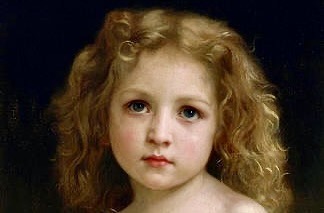
Alike of many other European societies during the Middle Ages, education in Moravian Serbia, for those who could afford it started at a pretty young age, 5-7 years of age.
Her father; Lazar made sure to open various public schools near monasteries for the less fortunate and opened a private one in the court of Krusevac for his own children and other children of the court; in other words other children of nobility, possibly also containing her ladies in waiting and companions.
The schools were led by priests and monks who offered knowledge in Christian theology and philosophy, writing, and reading in their mother's tongue.
Her early life was mostly filled with education, education and more education. (The children of Prince Lazar were considered the most educated in their time.)
Apart from school, from private foreign tutors and under the strict supervision of her mother; Grand Princess Milica, and aunt; nun Jefimija she learned Latin, Greek, mathematics, singing, literature, and the secrets of diplomacy and etiquette for a Princess.
She also learned how to run a household from her mother, either by observing or by her mother educating her on the topic of becoming the mistress of the house.
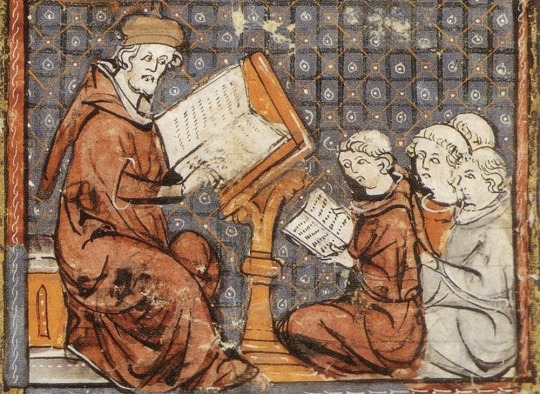
When away from her studies, Olivera was likely preoccupied with the various musicians, jesters, actors, weavers, tailors, magicians, and preachers coming for a quick stay at her father's court, who offered her temporary entertainment like songs, plays, clothing, and jewerly.
Like the rest of her family, Olivera was passionate about literature and art.
The palace of Krusevac contained a large library where the royal children were educated. The library contained various native and foreign translated scriptures, the foreign scriptures in question were Greek, Arab and Indian. containing history as well as fiction; which Olivera seemed to be a fan of, as she would later become a patron of art and literature.
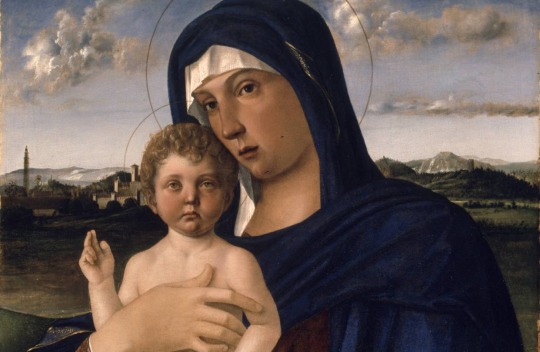
In 1381, the family suffered the loss of the youngest prince; who unfortunately died in infancy.
Years later between 1387 and 1388, Olivera's elder unmarried sister; Teodora was married off and left the capital leaving Olivera as the only unmarried Princess.
Some sources claim that growing up Olivera was the favorite of everyone, the people, her parents, her sisters, and her younger brothers, but perhaps this legend was due to her sacrificial marriage.

Though all Lazarevic members participated in the knight tournaments, especially the princes. Olivera as the rest of the female family members most likely stayed on the sidelines to watch.
Her life was mostly filled with duties and education, but she did have time for other activities and hobbies like art, literature, and knight tournaments. She seemed to have a rich and peaceful life up until The beginning of 1389.
( Sources: „Књижевни лик кнеза Лазара у старој српској књижевности." Od roda Nemanjića by Dr Miladin Stefanović. Book: Daily life in medieval Serbia by Marko Popović, Smilja Marjanović-Dušanić, Danica Popović.)
#geology#mariaoliveralazarevic#Oliverahatun#DespinaHatun#Princessmariaoliveralazarevic#Mariahatun#Hatun#Sultana#StefanLazarevic#despotstefan#Lazar#Knezlazar#tsarlazar#JelenaLazarevic#LazarevicDynasty#medievalserbia#PrincessMilica#MilicaNemanjic#MilicaHrebeljanovic#royalife#Moravianserbia#knights#knighttournaments#oliverdespina#Milevaolivera#childhood#princess#Despina Hatun#Olivera Despina#Olivera Hatun
4 notes
·
View notes
Text
LAZAREVIC SISTERS V
Olivera Lazarevic

Early Life
Olivera Lazarević, also often referred to in Byzantine and Greek sources as Maria, was the fifth child and youngest daughter of Knez Lazar and his wife Milica.
She was likely born around 1372/1373 and raised in her father’s capital, Kruševac, receiving the same education as her elder sisters, under the guidance of their mother and maternal aunt, Nun Jefimija.
Like most in her family, she was a fanatic of the arts and literature. Though she was never an artist in her own right, she acted as a patron of it.
There is a folk legend that in her youth, Olivera caught the attention of the Serbian knight, Miloš Obilić, who happened to be a frequent visitor at her father’s court and was considered one of the family.
This attraction led to a marriage proposal by Obilić, yet he was refused by her father, using her young age as an excuse.
Marriage to Sultan Bayezid I
Following the Battle of Kosovo in the summer of 1389, and the death of Sultan Murad I and execution of Knez Lazar, the Serbs abided themselves in a vassalage to the Ottomans due to the Hungarian attacks, who wanted to take charge of Serbia and the advancement of the Ottomans.
To officialize this "ending" vendetta, a proposal was made to the then regent, Milica, of a union of peace with the newly crowned Sultan Bayezid, son of Sultan Murad. Although the mother tried to fight and prolong her final decision, by the end of that same year, her youngest daughter was betrothed to the new Sultan.
The Serbian lords, who were quite unhappy about this betrothal, involved themselves in some sort of intrigues to make Bayezid suspicious in order to prevent this union. However, it obviously did not prevail.
It is unclear if the wedding reception took place in late 1389 or in the spring of 1390. As stated by Konstantin Kostenecki in his biography of Stefan Lazarević written in 1431, he reports that after the Ottoman ambassadors and Milica agreed on the marriage, Stefan appeared before Bayezid with his sister Olivera and the marriage took place. As far as we know, the proposal was accepted in late 1389.
Nonetheless, one thing is for sure, and that is the fact that the reception took place no later than the spring of 1390. This is because the joint action of the Serbs and Turks against the Hungarians in northern Serbia, southern Hungary, and eastern Bosnia took place already in the spring or at the latest in the summer of that year, meaning by the spring of 1390, Olivera was married to the same man who gave orders for her father’s execution.
The wedding seems to have been kept quiet as it appears to have taken place in a mosque, following a Muslim ceremony. Many Serbian lords and people were unhappy about their Orthodox Christian Princess marrying a Muslim, even if it brought some temporary peace to Serbia.
According to Ducas, a 15th-century historian, on top of many talents of silver from Serbia's mines, Bayezid received "a tender virgin."
With this marriage came a new title and epithet. Ottomans referred to her as "Devlet Hatun," meaning "State Woman" or "Queen," while she also earned a Greek nickname/epithet, "Despina," meaning female despot, queen, or mistress.
It appears that for the rest of her life, she was referred to by this epithet instead of her actual name.
A Woman of Great Influence
Despite the unfavorable circumstances in which this political marriage began, it is noted by historical and contemporary historians that Bayezid loved and valued the counsel of his wife, Despina. It is accepted that the couple welcomed three daughters together; the eldest bears an unknown name, the second in line is Pasa Melek, and the youngest is Oruz.
Her legendary beauty, noble background, and education played a key role in Bayezid’s favoritism of her over all his other consorts and in his trust in her counsel.
From the moment she arrived until his last breath, she remained his main and favorite wife, and had influence on her husband's politics, which played in favor of her people.
Despina was, of course, blamed for having introduced European customs, wine, and mass partying into the once "pious" Ottoman court, and for "whispering in her brother’s favor." However, these criticisms were mostly due to the fact that she was a Christian wife and remained one even though she had influence over her husband. This of course, played a role in the Muslim Ottomans distain of her.
Though it is unknown if Despina reciprocated the same sentiment towards her husband, it is noted that wherever Bayezid went, he could not sperate from the Serbian Princess, and thus he took her everywhere with him, suggesting that throughout their marriage she remained a loyal companion.
Throughout his reign, and despite coming and going concubines, Bayezid remained devoted to one woman: Despina.
According to Serbian sources, her biggest accomplishments were to partake in Bayezid’s decision to transfer a vast portion of Vuk Branković’s lands (her brother-in-law through Mara) in 1397, following the man’s death and place them under the governance of her younger brother, Stefan.
The other was to save her brother from Bayezid’s wrath in 1398 when he was accused of conspiring with the King of Hungary. Stefan came to the Sultan after the failed attempt of his mother to defend him. It is believed that Olivera was the one who stepped up, and her brother was forgiven upon admitting his fault.
Captivity
Following the aftermath of the Battle of Ankara in 1402, a battle which Bayezid and his sons, Mustafa and Musa, lost and were taken as captives, Timur sent his generals to plunder Bursa, taking many treasures from the palace with them, including Bayezid's concubines. Eventually, they made their way to Yenisehir, where Despina was hiding with two of her daughters.
Despina and her household were brought to Timur and later to Bayezid, who was being kept captive in a tent. Although they were treated with respect at first, events occurred that led to Bayezid being humiliated and kept in an iron cage, while his wife was forced to perform menial tasks at festivities.
Unable to bear the insult made towards his wife, Bayezid committed suicide in his iron cage and was temporarily buried in Akşehir, where he had passed.
Timur is believed to have felt great guilt because of this and released Bayezid’s entourage. He married Despina’s daughters to the son of one of his generals and the other to his grandson, Ebu Bakr Mirza. Both daughters moved to Samarkand where they lived with their families.
In 1404, Despina was released along with her step-son, Musa, during the transfer of Bayezid’s body to his personal mosque in Bursa. It is assumed she attended his second funeral.
As the Advisor of the Despots
Following her release, nothing is known or recorded about Despina's whereabouts until the 1420s. It is believed by some that she might have stayed in Bursa or somewhere nearby with her youngest daughter until she grew tired of the battle for the throne going on between Bayezid’s sons and later moved to Serbia.
Or, she might have stayed until the time her youngest daughter was married off.
After her return to Serbia, she took her place at her already widowed brother's side as his comforter and trusted advisor. However, she never lived at court but instead had her own residence in the courtyard of Belgrade.
She was extremely popular, respected, and valued in her homeland. Even during her lifetime, the Serbs referred to her as “Esther” due to her sacrificial marriage to a persecutor of the Christians.
During her stay in Dubrovnik, it is plausible she met with her sister and brother-in-law, Sandalj Hranic, though some historians believe she was there for diplomatic reasons, possibly to acquire information on her brother-in-law to inform her younger brother; the now Despot Stefan Lazarevic.
In 1427, her younger brother passed away, but this did not end her influence. Soon after, she acted as an advisor to her nephew, Durad Brankovic, and from 1430 onwards, moved with his family to Smederevo, the new capital.
Murad II, the Ottoman Sultan at the time, must have believed that since Stefan Lazarevic had died without any children to proclaim as heir, then the state should pass from Stefan to his step-grandmother, Olivera, and thus to himself.
As a result of this situation and threat to their state, historians believe it was Despina who planned Mara Brankovic's marriage to Murad in order to prevent the Ottomans from advancing. And thus, the marriage was concluded in 1435 in the Ottoman capital.
Though this marriage, unlike Olivera's own marriage, did not prevent Ottoman expansion in Serbia.
In 1441, while her nephew Durad was in exile, she traveled from Dubrovnik to Bar, where it is believed she was able to convey secret diplomatic letters to her nephew.
Later Life
Nothing is known about the later life of Despina from 1443 onwards; they lost track of her.
The last time she is mentioned alive is in a 1443 document, in which her sister, Jelena, names her as her executor in her will. She left money to Despina in order to build a burial place for her and to distribute some of the money to the poor.
After this, nothing more is recorded; it is unknown when, where, and how she died.
Issue
Unkown Hatun
Pasa Melek Hatun
Oruz/Uruz Hatun
( Sources: Osmanlı Sarayı’nda Bir Sırp Prenses/ Mileva Olivera Lazarevic by Mustafa Çağhan Keskin, КЋЕРИ КНЕЗА ЛАЗАРА ИСТОРИЈСКА СТУДИЈА ПОГОВОР by Jelka Redep, Dve srpske sultanije : Olivera Lazarevic (1373-1444) : Mara Brankovic (1418-1487) by Nikola Giljen, “КЋЕРИ КНЕЗА ЛАЗАРА ИСТОРИЈСКА СТУДИЈА ПОГОВОР” by Jelka Redep, Dve srpske sultanije : Olivera Lazarevic (1373-1444) : Mara Brankovic (1418-1487) by Nikola Giljen, The European Sultanas of the Ottoman Empire by Anna Ivanova Buxton )
#Olivera Lazarevic#olivera despina#despinahatun#lazarevicdynasty#history#art#illustration#lazarevicsisters#ottoman empire#middle ages#hatun#despina hatun#geology#biography
0 notes